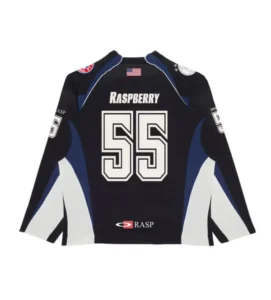Understanding the Evolution of Sustainable Fashion
Sustainable fashion is no longer a trend—it is a movement reshaping the entire textile and apparel industry. Consumers are increasingly demanding eco-conscious, ethically produced garments, and brands that fail to adapt risk irrelevance. Among the brands taking notable strides is Vlone, with its hoodie collections now undergoing a green revolution.
The push toward sustainable fashion is being driven by concerns over climate change, labor exploitation, and excessive textile waste. In this shifting landscape, Vlone hoodies serve as a compelling case study in how sustainability can enhance brand value, consumer trust, and environmental responsibility.
The Materials Behind Vlone’s Eco-Friendly Shift
One of the most critical aspects of sustainability lies in material selection. Traditional hoodies often use non-organic cotton, polyester, and synthetic dyes, which carry a heavy ecological footprint. In contrast, Vlone has begun integrating:
- Organic cotton: Free from pesticides and GMOs, organic cotton significantly reduces soil and water contamination.
- Recycled polyester: Made from post-consumer waste such as plastic bottles, reducing dependence on fossil fuels.
- Natural dyes: Derived from plants and minerals, eliminating the toxic runoff associated with conventional dyeing.
By opting for sustainable raw materials, Vlone hoodies not only reduce environmental harm but also promote healthier farming and water usage practices, further strengthening their ethical narrative.
Low-Impact Manufacturing Processes
Sustainability isn’t only about what goes into the hoodie—how it’s made is equally important. Vlone has aligned with manufacturers who prioritize low-impact processes, including:
- Waterless dyeing technologies that reduce freshwater consumption by over 90%.
- Closed-loop systems that recycle wastewater within production facilities.
- Renewable energy usage in factories, cutting down on greenhouse gas emissions.
This commitment to green manufacturing enables Vlone to position its hoodies as genuinely sustainable from fiber to finish, an increasingly important factor for environmentally aware customers.
Circular Fashion and Vlone’s Role in Reducing Waste
A key principle of sustainable fashion is circularity—the idea that clothing should be designed, produced, and disposed of in a way that minimizes waste. Vlone has embraced this by:
- Introducing take-back programs where customers can return worn-out hoodies for recycling or repurposing.
- Offering limited-edition capsule drops to avoid overproduction.
- Promoting repair kits and tutorials, encouraging longevity over disposability.
By creating a closed-loop model, Vlone reinforces its commitment to a circular fashion economy, making its hoodies not just stylish but also a conscious consumer choice.
The Ethical Dimension: Fair Wages and Safe Working Conditions
Sustainable fashion isn’t solely about environmental factors—it also encompasses ethical labor practices. Vlone works closely with certified factories that guarantee:
- Fair wages above the industry standard.
- Safe, healthy working conditions for all employees.
- No child or forced labor in any part of the supply chain.
This ethical commitment enhances the social value of Vlone hoodies, making them symbols of responsible consumption in a world increasingly concerned with transparency and human rights.
The Economic Advantage of Sustainable Hoodies
There is a common misconception that sustainable fashion is cost-prohibitive. However, Vlone has proven that eco-conscious practices can be economically viable. The brand has:
- Reduced production costs over time through energy efficiency.
- Created stronger customer loyalty due to its transparent practices.
- Expanded into new markets where consumers prioritize green products.
By integrating sustainability into its core brand strategy, Vlone has turned eco-consciousness into a competitive advantage, attracting investors and consumers alike.
Influence on Consumer Behavior and Brand Loyalty
Modern consumers are more values-driven than ever. Studies show that over 70% of Gen Z and millennials prefer to buy from brands that align with their environmental and ethical values. Vlone taps into this by:
- Offering full traceability of materials and manufacturing locations.
- Using QR codes on hoodies that link to detailed sustainability reports.
- Creating community-driven content around environmental activism.
This deep engagement translates to increased trust, stronger word-of-mouth marketing, and higher repeat purchase rates, all of which are critical to long-term brand growth.
Digital Transparency and Blockchain Integration
To further build trust, Vlone Hoodie is adopting blockchain technology to provide immutable proof of its sustainable claims. Each hoodie comes with a digital passport that details:
- Material origin
- Carbon footprint
- Factory certification
- Recycling eligibility
This level of transparency gives consumers the confidence to support sustainable fashion while ensuring accountability at every stage of production.
Sustainability and Streetwear: Bridging Two Worlds
Traditionally, streetwear and sustainability have existed in separate realms. Streetwear is often associated with rapid trend cycles, mass production, and hype-driven drops. Vlone disrupts this narrative by:
- Merging limited-edition appeal with sustainable craftsmanship.
- Collaborating with eco-conscious artists and designers.
- Leveraging its streetwear influence to promote climate justice and environmental awareness.
As a result, Vlone is redefining what it means to be fashion-forward in a climate-conscious world, proving that style and sustainability are not mutually exclusive.
The Future of Sustainable Fashion: Vlone’s Ongoing Commitments
Looking forward, Vlone plans to deepen its sustainability mission by:
- Achieving carbon neutrality across its supply chain by 2030.
- Launching biodegradable hoodie collections made with hemp and bamboo.
- Investing in climate-positive initiatives, such as tree planting and ocean cleanup.
These forward-thinking strategies ensure that Vlone remains at the forefront of the sustainable fashion movement, inspiring both consumers and competitors to follow suit.
Conclusion
The impact of sustainable fashion on Vlone hoodies is profound and multifaceted. From raw materials to consumer transparency, every aspect of the hoodie’s lifecycle reflects a commitment to ethical, ecological, and economic sustainability. As demand grows for responsible fashion, Vlone stands as a leader in the transition, showing that sustainability is not just a choice—it is the future of fashion.





